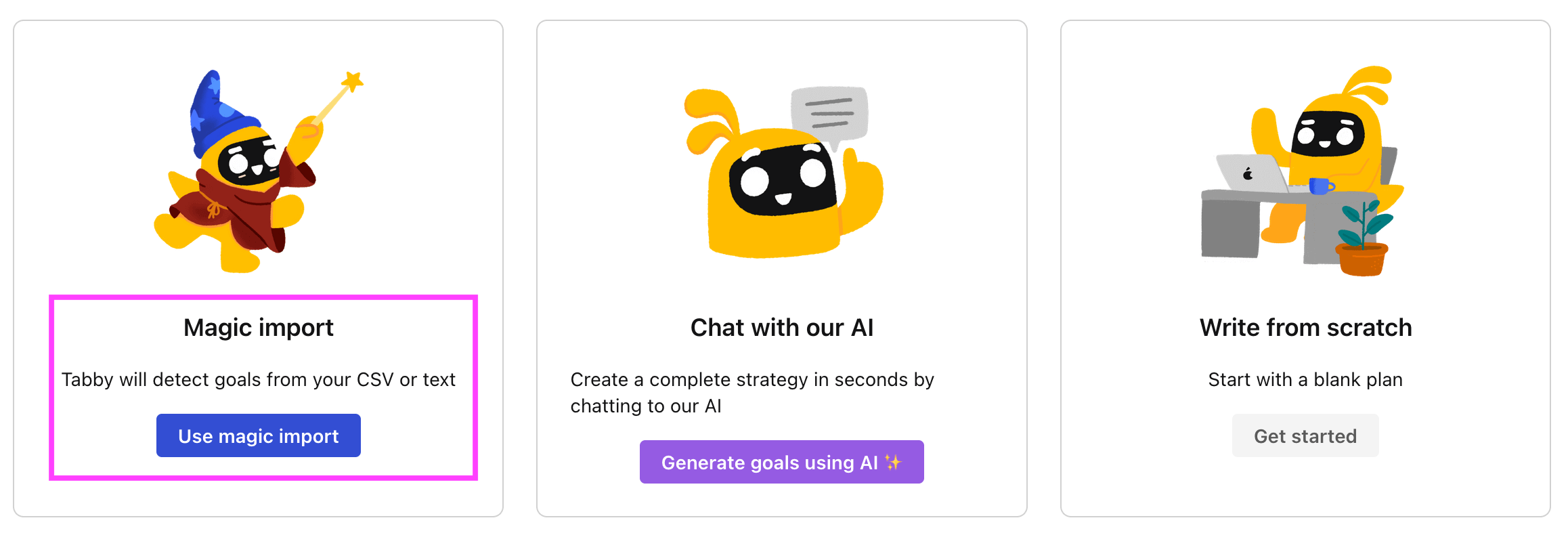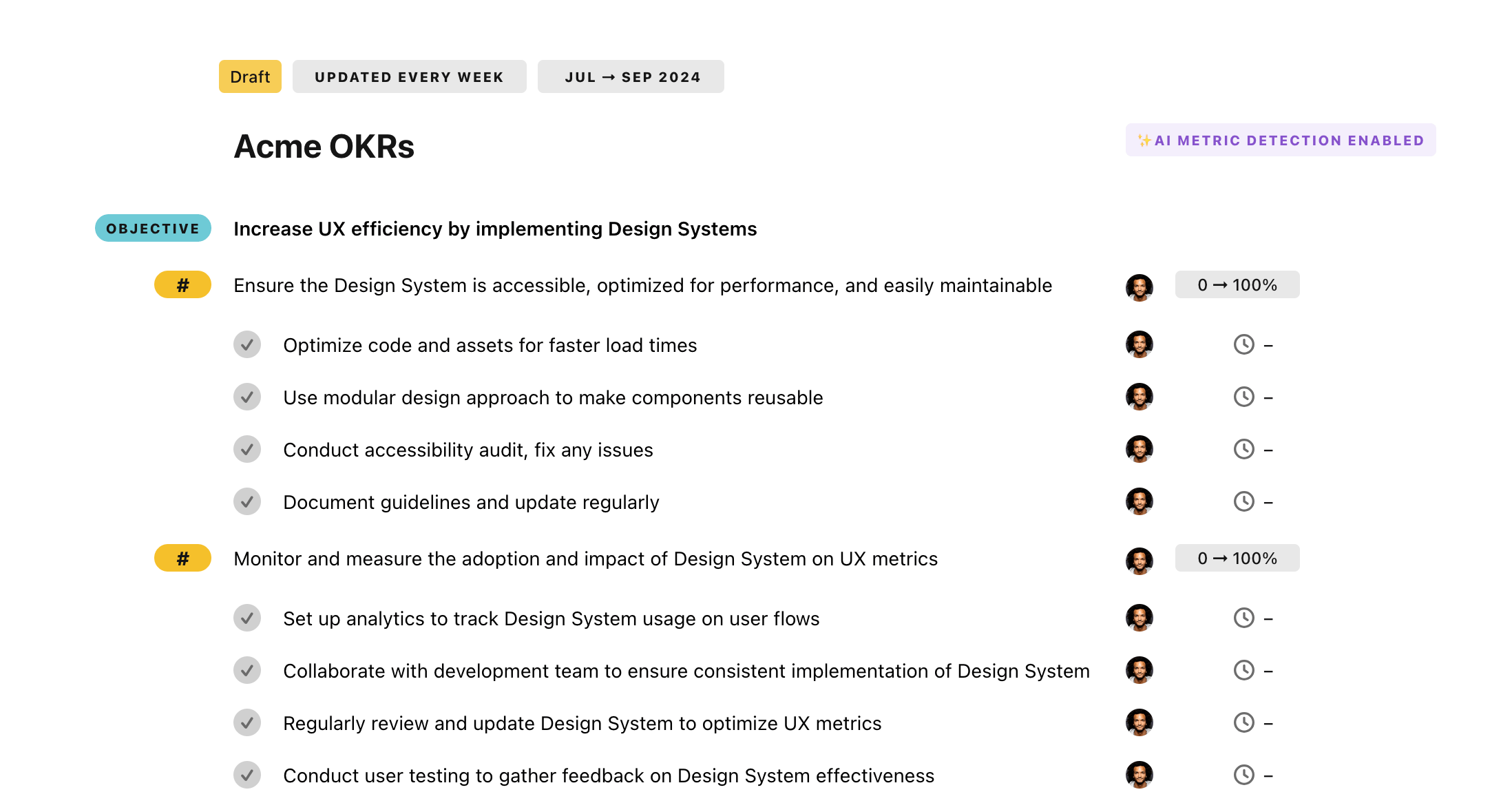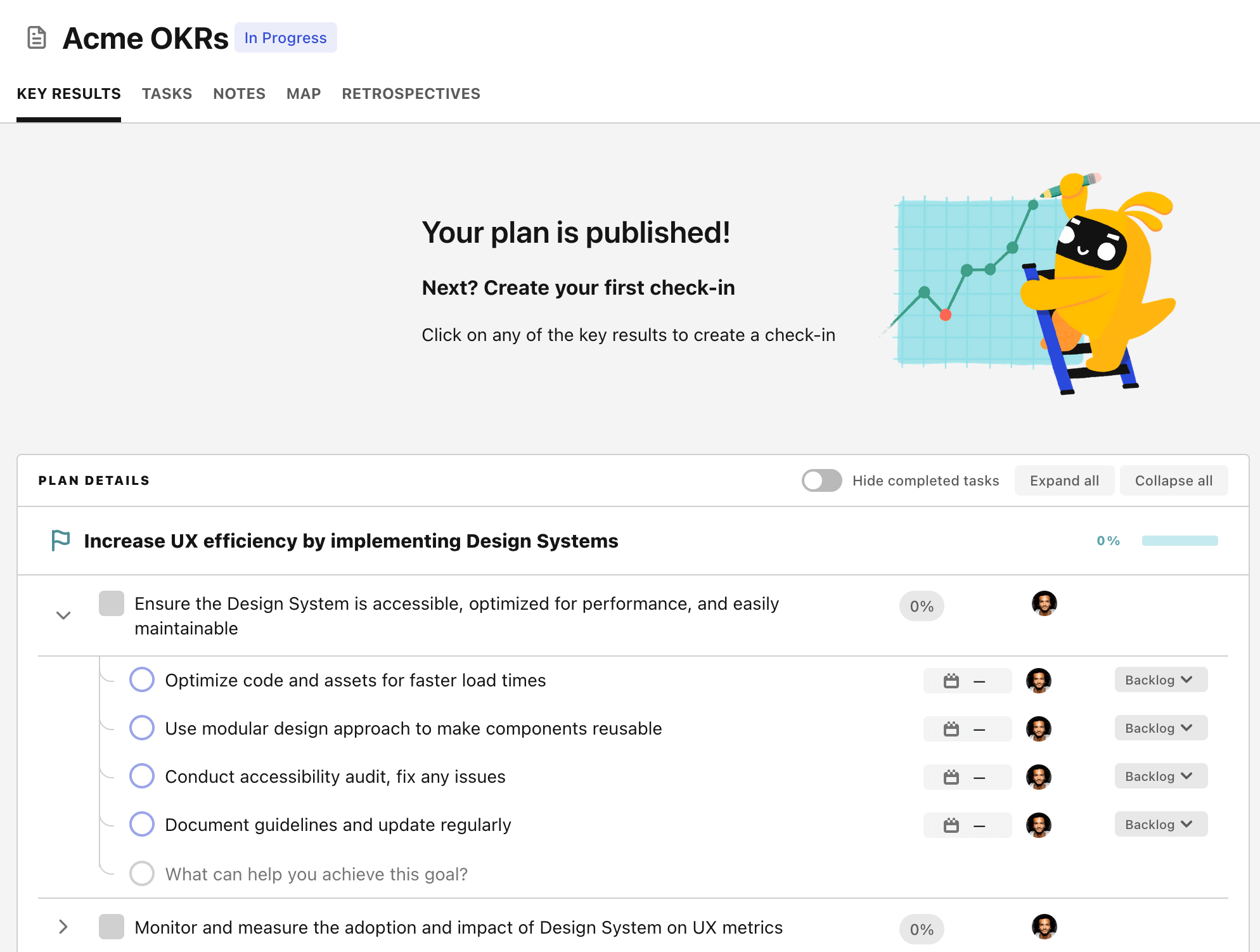OKR template to enhance overall customer satisfaction across our services
Your OKR template
The second outcome is to achieve a 20% rise in recurring customer transactions. This growth is sought through the implementation of loyalty programs to reward regular customers, communicating special offers or discounts regularly, and improving customer service standards and responsiveness.
The third objective aims to boost the customer satisfaction survey score by 10%. This will be achieved by offering comprehensive employee customer service training to improve interactions with customers. It also involves improving product quality based on customer feedback and initiating more personalized customer engagement to create a more positive customer experience.
The initiatives outlined for each outcome clearly highlight that this OKR emphasizes a multifaceted approach that interlocks customer service, product quality, and customer engagement to enhance overall customer satisfaction.
ObjectiveEnhance overall customer satisfaction across our services
KRReduce customer complaints by 15%
Enhance customer service training for effective communication
Develop proactive strategies for quicker problem resolution
Implement more rigorous checks on product quality before dispatch
KRAchieve a 20% rise in repeat customer transactions
Implement loyalty programs to reward frequent customers
Regularly communicate special offers or discounts
Improve customer service standards and responsiveness
KRIncrease customer satisfaction survey score by 10%
Implement comprehensive employee customer service training
Improve product quality based on customer feedback
Initiate more personalized customer engagement
How to edit and track OKRs with Tability
You'll probably want to edit the examples in this post, and Tability is the perfect tool for it.
Tability is an AI-powered platform that helps teams set better goals, monitor execution, and get help to achieve their objectives faster.
With Tability you can:
- Use AI to draft a complete set of OKRs in seconds
- Connect your OKRs and team goals to your project
- Automate reporting with integrations and built-in dashboard
Instead of having to copy the content of the OKR examples in a doc or spreadsheet, you can use Tability’s magic importer to start using any of the examples in this page.
The import process can be done in seconds, allowing you to edit OKRs directly in a platform that knows how to manage and track goals.
Step 1. Sign up for a free Tability account
Go tohttps://tability.app/signup and create your account (it's free!)
Step 2. Create a plan
Follow the steps after your onboarding to create your first plan, you should get to a page that looks like the picture below.

Step 3. Use the magic importer
Click on Use magic import to open up the Magic Import modal.
Now, go back to the OKR examples, and click on Copy on the example that you’d like to use.

Paste the content in the text import section. Don’t worry about the formatting, Tability’s AI will be able to parse it!

Now, just click on Import from text and let the magic happen.

Once your example is in the plan editor, you will be able to:
- Edit the objectives, key results, and tasks
- Click on the target 0 → 100% to set better target
- Use the tips and the AI to refine your goals
Step 4. Publish your plan
Once you’re done editing, you can publish your plan to switch to the goal-tracking mode.

From there you will have access to all the features that will help you and your team save hours with OKR reporting.
- 10+ built-in dashboards to visualise progress on your goals
- Weekly reminders, data connectors, and smart notifications
- 9 views to map OKRs to strategic projects
- Strategy map to align teams at scale